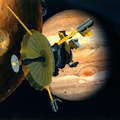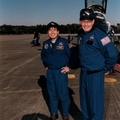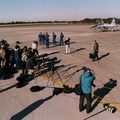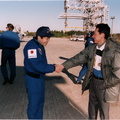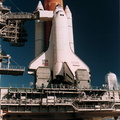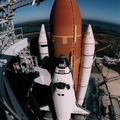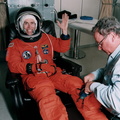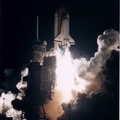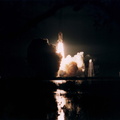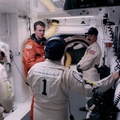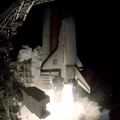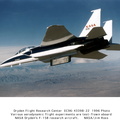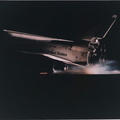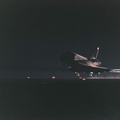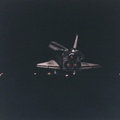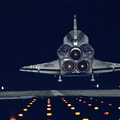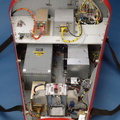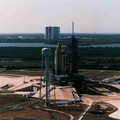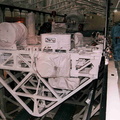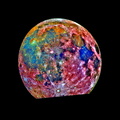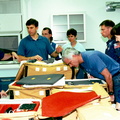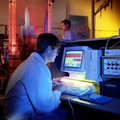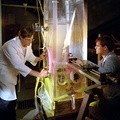
WIKIARCHIVES.SPACE
The Human Spaceflight Archive

Information
- Taken in
- Kennedy Space Center
- Author
- NASA
- Description
- The United States Microgravity Payload-3 (USMP-3) is readied by KSC workers for its move from the Cargo Interface Test Equipment (CITE) stand in the Operations and Checkout (O&C) Building and installation into a payload canister along with the Tethered Satellite System-1R (TSS-1R). Once in the canister, both payloads were transported to Launch Pad 39B to be integrated into the payload bay of the Space Shuttle Orbiter Columbia during final preparations for the STS-75 mission. During the 12-day, 16-hour space flight, the 5-foot (1.6 meter)-in-diameter TSS-1R satellite will be deployed from its pallet in Columbia's payload bay to a distance of 12.4 miles (20.7) kilometers) above the orbiter as an attached, electrically-conductive tether the diameter of a wooden matchstick unwinds from a motorized reel. The objectives of the TSS program are to demonstrate the ability to deploy and control satellites on long tethers in space and to conduct space plasma experiments that include the generation of electrical power. The USMP-3 is a continuation of NASA's microgravity research program to provide advances in the fields of materials science and condensed matter physics. Four major USMP-3 experiment packages are in Columbia's payload bay, while three combustion experimetns will be conducted by the crew in a Glovebox facility located in the orbiter's middeck area.
- Created on
- Wednesday 24 January 1996
- Albums
-
Locations / OSM-4.915832801313164
US SPACE PROGRAM / SPACE SHUTTLE / MISSIONS / STS-75 / Rocket preparation
- Source link
- https://science.ksc.nasa.gov/gallery/photos/1996/captions/KSC-96PC-0174.html
- Visits
- 70
- Rating score
- no rate
- Rate this photo
- License
- CC BY-NC
- Modified by WikiArchives
- No (original)
- Downloads
- 1
Powered by Piwigo
